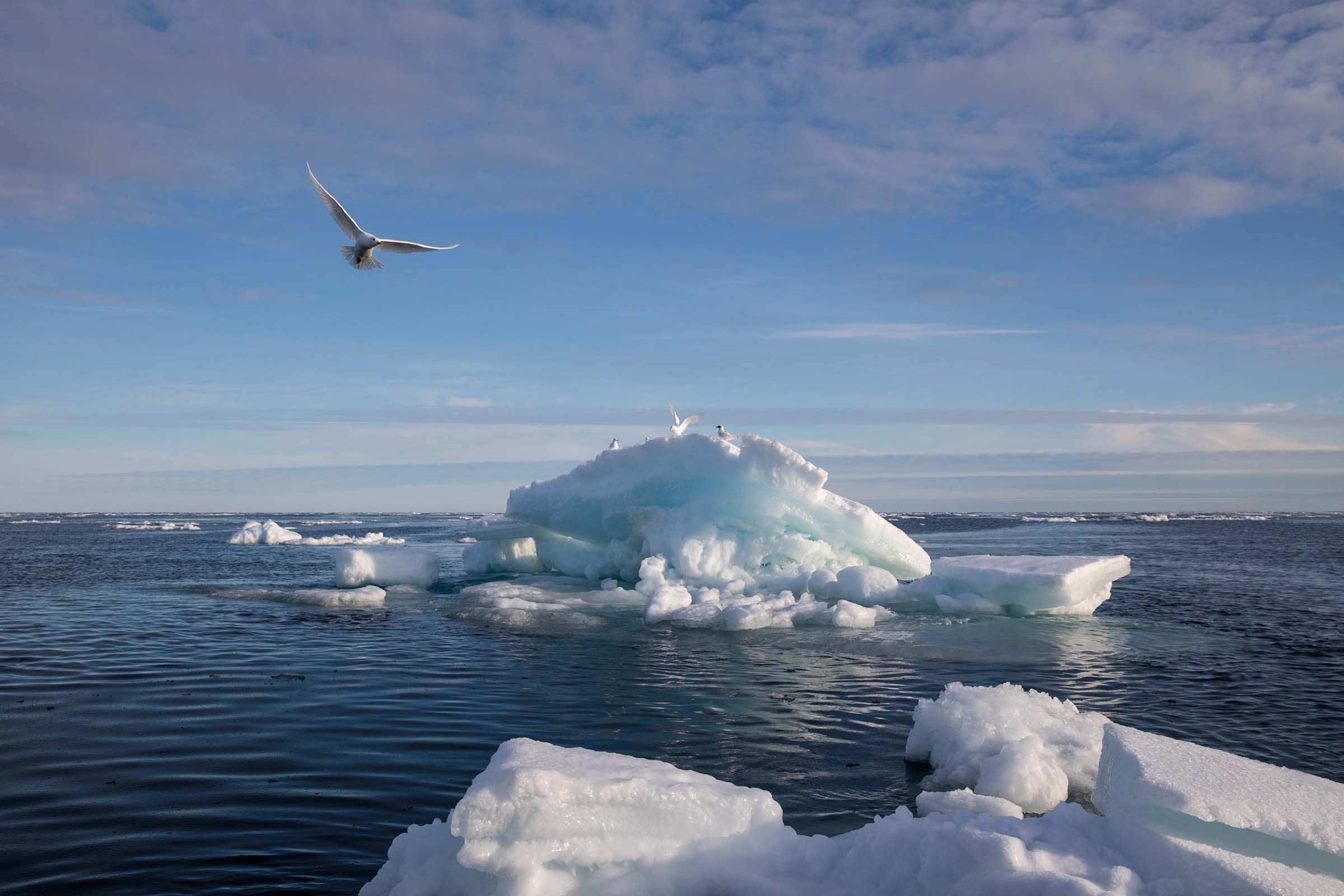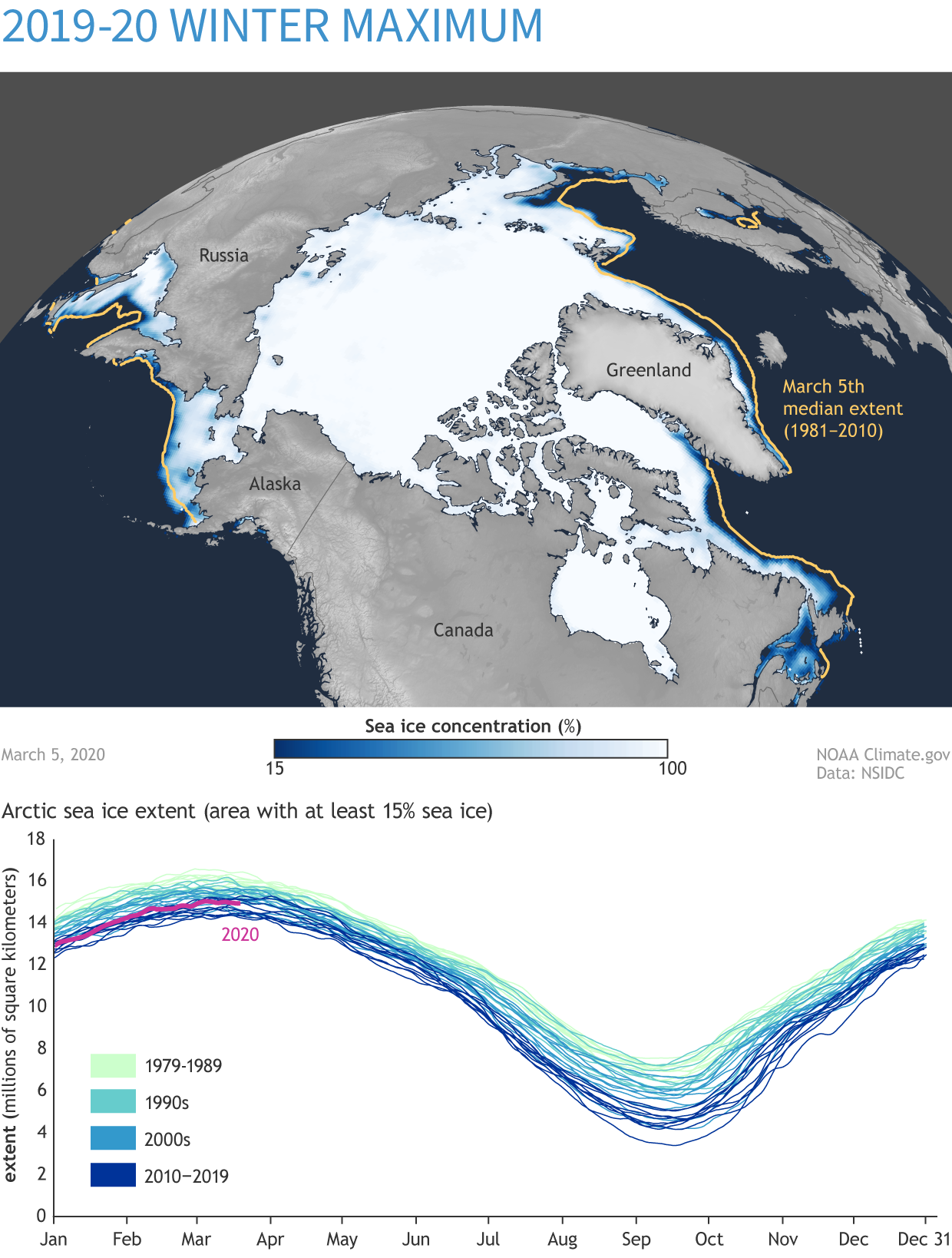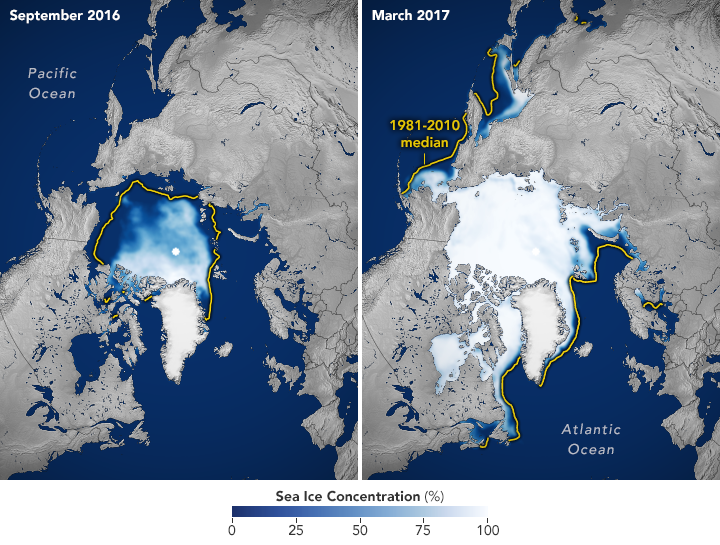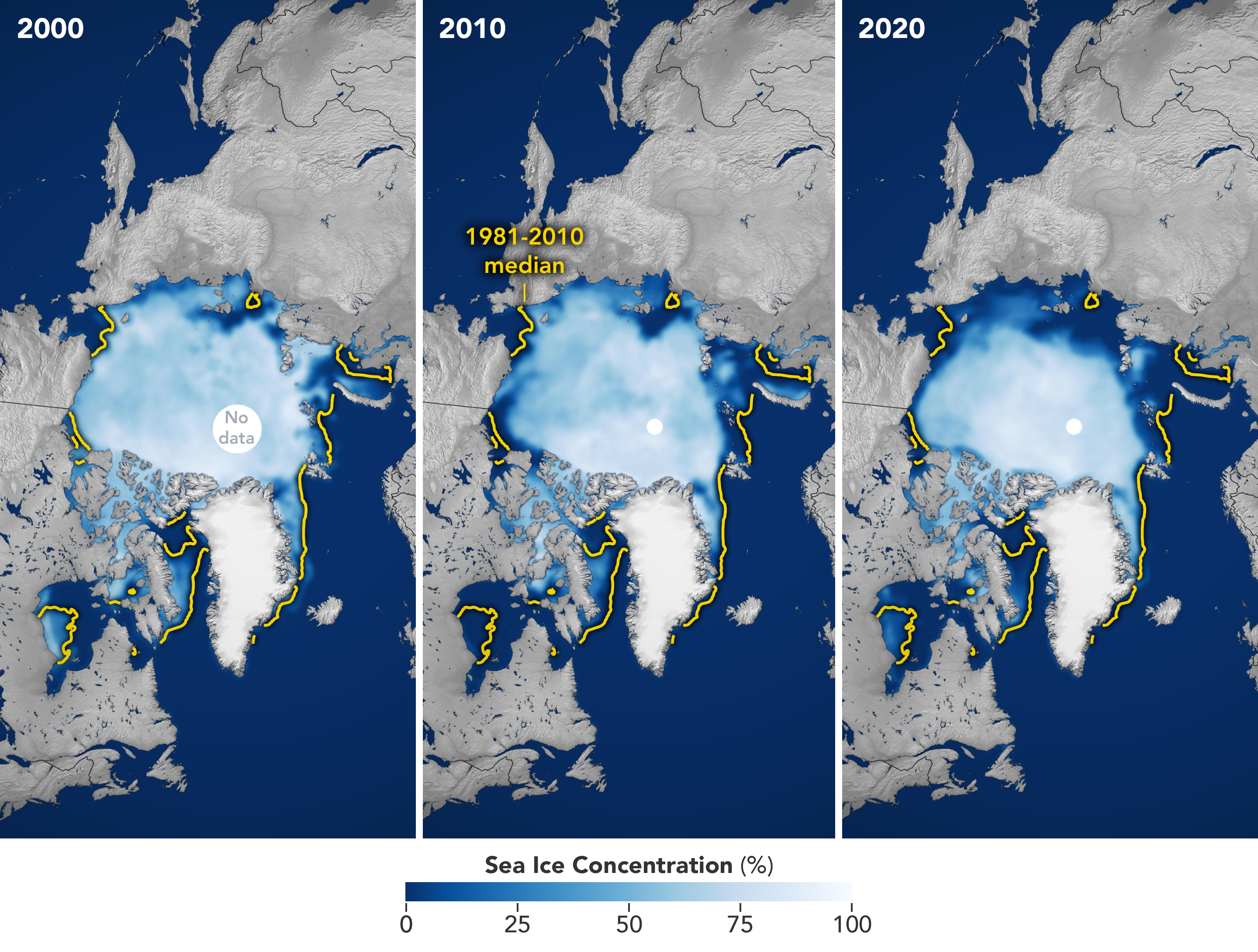Polar Ice Caps 2020
This visualization shows the expanse of the annual minimum Arctic sea ice for each year from 1979 through 2020 with a graph overlay. On March 24 the National Snow and Ice Data Center NSIDC reported that the 20192020 growth season had an unexceptional finish.
 Arctic Sea Ice Shrinks To Second Lowest Level On Record Time
Arctic Sea Ice Shrinks To Second Lowest Level On Record Time
This visualization shows the expanse of the annual minimum Arctic sea ice for.

Polar ice caps 2020. NASAs released evidence of Mars polar ice cap collapsing is a message to Al Gore Greta Thunberg et al that global warming is caused by solar activity and not man-made carbon dioxide. Aside from only suffering an insignificant loss the polar ice caps were still able to substantially recover. Ad Search Polar Cold Caps.
It is just above the average extent of the 2001-2010 period. Sunday 19 April 2020. Today polar ice caps are melting six times faster than they did in the 1990s.
Arctic sea ice extentthe area where ice concentration is at least 15 percentreached its apparent annual maximum on March 5 2020. Weve all seen the pictures. Every summer the Arctic ice cap melts down to what scientists call its minimum before colder weather begins to cause ice cover to increase.
NASAJPLMalin Space Science Systems. Since 1901 the global sea level has risen by about 8 inches 20 cm. Theres Been a Six-Fold Increase in Polar Ice Cap Melting Since the 1990s.
Angie Agostino Pixabay Loading. Notably the disappearing polar ice caps will accelerate global warming cause widespread coastal flooding and contribute to. 2020 Polar Ice doing just fine October 24 2020 October 24 2020 Cap Allon According to the latest October report from the National Snow and Ice Data Center NSIDC the ice locked at Earths poles is overall GROWING.
The Northern Sea route appears to be nearly open. Thanks to the strong polar vortex the Arctic sea ice reaches the largest ice extent in the past 11 years Also in the last 20 years 2020 is at the seventh-largest ice extent for early February. 581 million square miles 1505 million square kilometers.
Get Results from 6 Engines at Once. NASA also estimates that since the beginning of the 20th century total ice loss of the Earths polar ice caps is a whopping 49000 gigatonnes. Research says melting will continue even if temperature rises are limited to 2C.
Satellite-based passive microwave images of the sea ice have provided a reliable tool for continuously monitoring changes in the Arctic ice since 1979. Visualizing the amount of ice loss. Far away in the high arctic polar desert of Ellesmere Island in Nunavut Canada next to Greenland were once the twin St.
5641gigatonnes of ice is enough to cover Texas in a sheet of ice 26 feet 8 meters high. This graph displays the area of the minimum sea ice coverage each year from 1979 through 2020. Every summer the Arctic ice cap melts to what scientists call its minimum before colder weather begins to cause ice cover to increase.
The 2020 minimum extent was 958000 square miles 248 million square kilometers below the 1981-2010 average of yearly minimum extents and 2020 is only the. The Siberian heat wave this past spring initiated early ice retreat along the Russian coast leading to very low sea ice extent in the Laptev and Barents Seas. Every summer the Arctic ice cap melts down to what scientists call.
15 2020 minimum 30-year average extents in yellow. Antarcticas vast ice cap which covers about as much of the earth as North America and is close to 5km. Polar ice caps in Antartica Photo.
March 12 2020. In 2020 the Arctic minimum sea ice covered an area of 336 million square kilometers. Get Results from 6 Engines at Once.
However in NASA satellite images from July 2020 they are nowhere to be seen. Patrick Bay ice caps. NASA captured an enormous ice collapse at Mars north pole.
It was the 11 th-lowest maximum in the 42-year satellite record. A Siberian heat wave in spring 2020 began this years Arctic sea ice melt season early and with Arctic temperatures being 14 to 18 degrees Fahrenheit 8 to 10 degrees Celsius warmer than average the ice extent kept declining. Animation of Arctic sea ice extent from the Mar.
By July 15 2020 Arctic sea ice extent was at a record low over the period of satellite observations for this time of year. The Arctic used to be white but now its turning blue and absorbing more heat in a feedback loop. Paired with the 2019 Arctic heatwave this melting rate may produce disastrous outcomes.
The Arctic affects the jet stream causing extreme weather all over the world. Ad Search Polar Cold Caps. A forlorn polar bear stranded on an ice floe - the living symbol of global warming melting the ice caps.
5 2020 maximum to the Sept. In 2020 the Arctic minimum sea ice covered an area of 336 million square kilometers. In total the two ice caps lost 64tn tonnes of ice from 1992 to 2017 with melting in Greenland responsible for 60 of that figure.
September 2020 Arctic Sea Ice News And Analysis
 Bad News Alarmists Official Data Reveals Arctic Sea Ice Is Once Again Growing Electroverse
Bad News Alarmists Official Data Reveals Arctic Sea Ice Is Once Again Growing Electroverse
 Unexceptional Arctic Sea Ice Maximum In 2020 Noaa Climate Gov
Unexceptional Arctic Sea Ice Maximum In 2020 Noaa Climate Gov
 2020 Arctic Sea Ice Minimum At Second Lowest On Record Climate Change Vital Signs Of The Planet
2020 Arctic Sea Ice Minimum At Second Lowest On Record Climate Change Vital Signs Of The Planet
Arctic Sea Ice News And Analysis Sea Ice Data Updated Daily With One Day Lag
January 2020 Arctic Sea Ice News And Analysis
 Polar Vortex Grows Arctic Sea Ice To 10 Year High But There S A Catch The Weather Channel Articles From The Weather Channel Weather Com
Polar Vortex Grows Arctic Sea Ice To 10 Year High But There S A Catch The Weather Channel Articles From The Weather Channel Weather Com
 Video Annual Arctic Sea Ice Minimum 1979 2020 With Area Graph Climate Change Vital Signs Of The Planet
Video Annual Arctic Sea Ice Minimum 1979 2020 With Area Graph Climate Change Vital Signs Of The Planet
July 2020 Arctic Sea Ice News And Analysis
 Sea Ice Cover For January 2020 Copernicus
Sea Ice Cover For January 2020 Copernicus
 Arctic Sea Ice Reaches 2019 Minimum Extent Youtube
Arctic Sea Ice Reaches 2019 Minimum Extent Youtube
 Sea Ice Below Normal Despite A Seasonal Bump
Sea Ice Below Normal Despite A Seasonal Bump
 World Of Change Arctic Sea Ice
World Of Change Arctic Sea Ice

Comments
Post a Comment